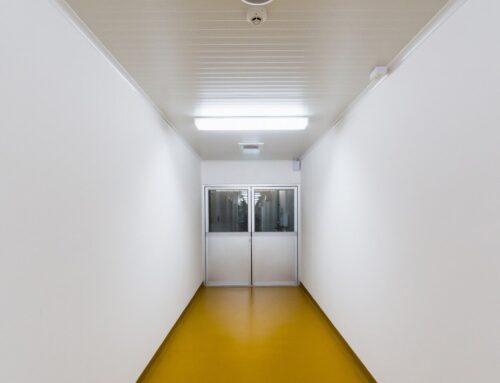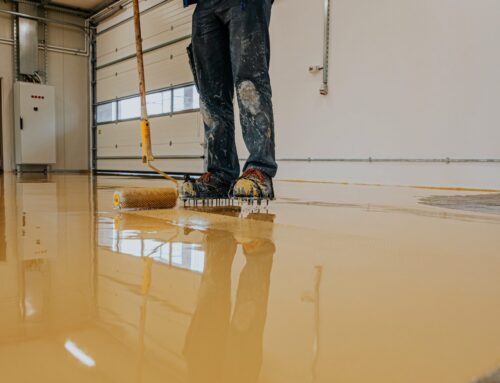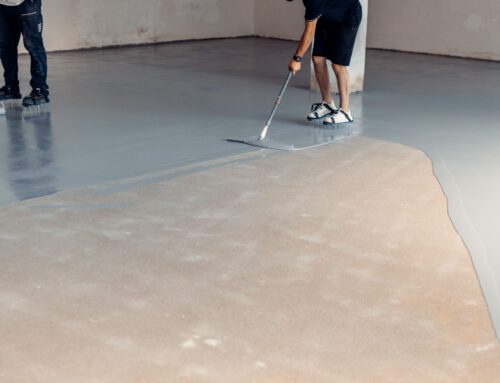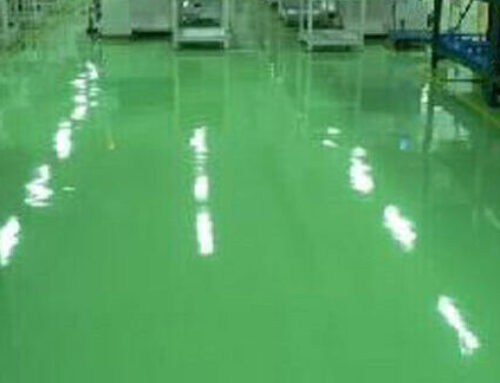
Polyaspartic coating is a relatively new technology, having been created and introduced to the commercial market in the 1990s. It was first used as a tough protective layer over metal structures, such as bridges, to prevent long-term corrosion. While still used in such scenarios, the versatile technology has been expanded to provide a robust coating and flooring solution that suits a wide variety of scenarios.
Polyaspartic coatings in the domestic setting
The durable properties of polyaspartic make it an excellent choice for exterior areas. It’s highly resistant to UV rays, meaning it doesn’t discolour, yellow or degrade – something that’s massively important in the hot Aussie environment. Additionally, as climate change brings wilder weather and more frequent storms to our shores, the unique chemical makeup allows it to withstand most environmental challenges.
Shimicoat’s unique polyaspartic floor options create a truly tough surface that expands and contracts with the ambient temperature. This means there’s no risk of the coating separating or peeling away from the surface below, no matter what the elements throw at it. Plus, the coating is amazingly resistant to abrasion and heavy traffic (both foot and wheeled). Once laid, you can expect a polyaspartic coating to remain looking pristine for many years.
Examples of where polyaspartic is successfully used in the domestic setting include:
- Swimming pools
- Pool decks and sun lounger areas
- Water features
- Ice baths
- Outdoor staircases and steps
- Patios
- Porches
- Garage floors
- Driveways
- Garden rooms
- Utility rooms
- Boot/mud rooms
- Basements and cellars
- Bathrooms
- Kitchens
Polyaspartic flooring and coatings come in a huge range of colours and finishes, meaning they can easily be tailored to fit in with any theme or décor.
Polyaspartic coatings in the industrial setting
Polyaspartic is also a standout coating and flooring option in industrial and commercial scenarios. As a tough, seamless option, its uses are wide and varied. Again, it’s a stand-out choice for exterior locations – often seen in warehouse and loading bays – ensuring a professional, identical match that extends beyond the interior boundary to the outside.
The flooring’s exceptionally tough properties make it more than capable of withstanding the heaviest of traffic – plus, being impact resistant, it’ll withstand machinery, tools and other typical challenges of a floor surface in a busy commercial environment.
In the industrial landscape, polyaspartic remains one of the best options as a protective coating, as well as a floor covering. Examples of where it can be found include:
- Piers
- Bridges
- On ships
- On railcars
- Machine shops
-
Commercial showers and locker rooms
- Commercial kitchens
- Manufacturing plants
- Food preparation areas
- Veterinary hospitals
- Fountains and water features
As well as the ability to tailor the colour and design, another reason polyaspartic is so popular is its fast-cure properties. In the commercial landscape, time is money. Applying a polyaspartic coating or floor can be achieved in mere hours, with full curing complete within less than 24 hours. Preparation is also very straightforward – the product can be applied over a multitude of materials, including concrete, metal, wood, a previously laid epoxy surface – pretty much any surface that doesn’t require a breathable material on top of it.
Leading Australian epoxy coating supplier, Shimicoat, leads the way in both epoxy and polyaspartic technology. Shimi’s polyaspartic range can be purchased as individual items, such as the two-part tinted polyaspartic mix (in your choice of colour), or in one of the many complete kit presentations. This includes the hugely popular swimming pool polyaspartic complete kit, slip-resistant ultra-clear and quartz floor finish.
For more information check out our Shimi University or contact our helpful team for a chat.





